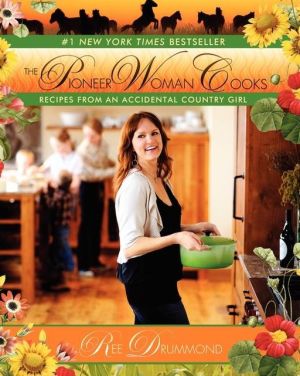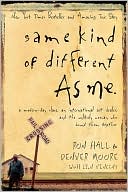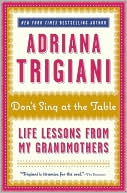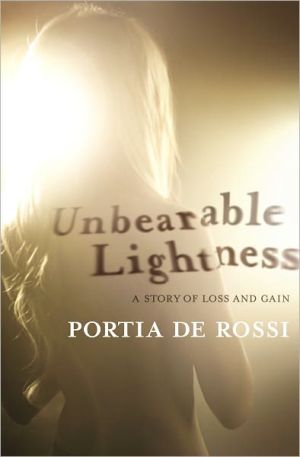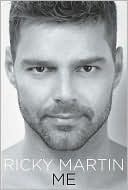Girl Reel
What do Susan Sarandon, Barbara Hershey, Meryl Streep, Bette Midler, and Cher have in common?\ All have portrayed lesbian characters on the silver screen. Although cinema and television in the last three decades of the twentieth century have been a wasteland for women in general and lesbians in particular looking for strong images of themselves, Bonnie Morris gives readers a front row seat on a life growing up and coming out at the movies. Morris writes, This is a collection of movie...
Search in google:
Two thumbs up for this smart and funny personal history of a lesbian coming of age and coming out at the movies. Publishers Weekly The summer that Morris (Eden Built by Eves) was allowed to ride her bike to the cinema by herself was the true beginning of her love affair with film. In this chatty, slight memoir, she tries to recapture an 11-year-old's confusing medley of desires: the longing to see precociously smart young girls like herself represented onscreen, to discover visual blueprints for adolescence amid the tantalizing glimpses of adulthood and, ultimately, to find images of women loving women. She recalls the movies she watched over and over again, like Paper Moon (featuring Tatum O'Neal as the girl who talked back); American Graffiti, with its infectuous soundtrack; and later, the not-so-straight Julia, in which Jane Fonda meets Vanessa Redgrave. There are the familiar icons: Jodie Foster as an outspoken tomboy; Barbra Streisand in Yentl, fighting the intellectual sexism that allows a Jewish woman to be lovable or learned, but not both. Unfortunately, Morris omits the details that might have raised the book out of its self-referential, celebratory mode to more sustained insight. (What did her hippie parents think when she took them to the midnight showing of The Rocky Horror Picture Show? How did they react when she came out?) It's hard to believe that even an earnest 16-year-old would really say, "Thank you for seeing the real me... more and more I realize the only way I can grow is up." Although the writing swings awkwardly into a preachy and self-congratulatory tone in the latter half of the book, the story of Morris's early girlhood and the glimmerings of her intellectual coming-of-age are most plainly evocative in this cinematic syllabus for one girl's personal and social enlightenment. (June) Copyright 2000 Cahners Business Information.\|
\ \ \ \ \ Chapter One\ \ \ Silence Please\ \ \ I took my first film studies course at age eleven when I began attending the notorious Carolina Friends School in Durham, North Carolina. This private alternative school is still a shining planet in Durham's educational orbit; still loyal to the philosophy of the Society of Friends, or Quakers. In 1972, however, the school's "experimental" structure and informal student-teacher hierarchy elicited mixed reactions from the population of Durham. Conservative folk clicked their tongues and swore that no child learned anything out at that wild Commie school in the woods. Liberals, in despair over the state of the local public school system, where daily prayer and arbitrary corporal punishment were still enforced in blithe disregard of federal law, felt a magnetic tug toward the long Carolina Friends School waiting list. My parents got me in.\ We began each day with silent meditation, called "settling in." The school was very young then, filled with ebullient long-haired kids and ebullient long-haired teachers; in a nation bitterly divided over Vietnam, Friends took an actively antiwar stance and peace studies was a part of the curriculum. Far from learning nothing, most of us in the middle school were intellectually abuzz, riveted by national politics and global issues. The glory of a Friends School education was that of course we studied traditional subjects such as writing and mathematics, but we were also free to choose electives like Animal Behavior, Women's Studies, Solar Energy, Folk Dance—and, in 1972, the History of Silent Film.\ \ \ The filmstudies course was simply called Silence Please. Students were expected to show up and watch respectfully. The host was a teacher named Greg Garneau, who initially planned to offer Silence Please only for upper school students at Friends. However, at the time, the upper school had yet to be built, and the high school students were meeting for classes in any spare room or free space, including the musty middle school building. This was how I was able to sneak into every screening of Silence Please that year.\ Greg believed in cultural literacy for young people, and screened what he understood to be the great silent pictures of early cinema: Nosferatu, The Battleship Potemkin, Phantom of the Opera. We, clandestine eleven-year-olds, admitted probationally to Greg's screenings, sat cross-legged on the gray industrial school carpeting and tried not to scream. Whenever we shrieked at the horror on parade—Nosferatu's predatory grimace, the Phantom's self-hating "accursed ugliness," Sergei Eisenstein's famous baby carriage crashing down the Odessa Steps (from which my own great-grandmother Rivka fled a pogrom)—Greg would simply lift his moustache from behind the projector and purr, ever superior, "Silence, please."\ \ \ By day, I preened with the honor of being permitted to study world cinema with Greg. By night, I wrestled with the problem of nightmares I did not care to have.\ I would not let myself dream of Nosferatu's face. Could my own willfulness prevent his intrusion in my sleep? How much discipline did I, at eleven, have over what frightened me?\ At dinner, over the hamburgers and tater tots, I casually asked my parents about dream life. "What makes us dream about weird or scary things?" I took a drink of milk from my favorite red plastic cup, which was shaped like a cowgirl boot. "I mean, things we totally don't want to dream about?"\ My father explained about the human subconscious. "You are exposed to an image, a comment, an event, that is filed away in your brain even after you think you've forgotten all about it. In sleep, these subconscious incidents or images come back. Thus, something you might have been exposed to even once can linger, troubling you in a way you won't be aware of until you sleep. Dreams pick from what is filed at the back of the mind. They are your unfinished business."\ I decided then and there that the key to my problem was simple: Control. I had to organize my own brain into a protective, self-serving bulwark against the wily subconscious. If one only dreamed about fearful images from the subconscious, maybe I could avoid nightmares by keeping all scary thoughts conscious: actively, blatantly at the front of my mind right before I went to sleep at night. Everything scary had to be right out there where I could keep an eye on it, rather than impractically "forgotten," which seemed to guarantee a later reappearance.\ I tested this theory. Curled in my top bunk, I brought out the faces of every scary person I did not want to encounter in my dreams. There was Nosferatu, poised to suck at my young neck. There was the Phantom, his mask jerked off to reveal a frightening visage. There were the broken and bleeding faces of Odessa, the woman's eyeglasses smashed into her face. Nosferatu, again. The Phantom, again. When I had allowed this mental tape loop of intimidating pictures to play several times, I figured I was safe from nightmares—my fears now manipulated into conscious, not subconscious, location.\ It really worked! I never had nightmares, and the few "bad" dreams I did have as I grew older never involved horror movies. My personal brand of inoculation against ghosts from the subconscious pleased me. I learned that I could control my mind, if not my body, which was unwillingly steamrolling into puberty at an alarming pace.\ \ \ At eleven, these one-on-one psychoduels with the misunderstood monsters of cinema had everything to do with my own changing appearance. Like Nosferatu, my teeth were enormous and hanging, and my overbite had begun to distort my face.\ I had grown sharp teeth at the incredibly early age of three months, forcing my punctured young mother to switch me from breast-feeding to a sterile bottle before I was even as old as a quarterly bank statement. I spent the next seven years rapturously sucking my thumb, as my father refused to permit me a pacifier; he felt they looked unbecoming on intelligent children. Now he was literally paying the price for his aesthetic preferences: I wore expensive new braces on my teeth. In time, the braces would cure my overbite and allow my face to resume its intended shape. But for a year or more, when I was eleven and twelve, part of my bedtime routine involved becoming a suffering monster myself.\ Promptly at eight P.M. each evening the grease-spattered clock on the kitchen stove reminded me that it was time to attach my "night brace," a phrase I cannot write without feeling, to this day, that slow ache in my back molars and the half-circle of pain sliding around my upper jaw. For as long as I had braces I spent half of my life, the twelve hours from eight P.M. to eight A.M., harnessed into this contraption, a thick wire which slid into slots on my back braces and was hooked around my neck in a stretch pad. All night long, unable to sleep on my side, I drooled uncomfortably as the brace reined my teeth in and shifted my facial structure to the required standard. The brace left strange indentations in my neck, like Frankenstein's bolt marks. Certainly, I knew this was temporary, best for me in the long run, a privilege. Fashionable, even; normative, healthy. For-my-own-good. Preventative medicine: the orthodontist at Duke University Medical Center showed me the file of photographs of spooky women with all the facial malformities that I could develop if I didn't obey my regimen of braces. On my way to and from the orthodontist's office I also had to walk through the plastic surgery ward, where I had additional glimpses of scary people: faces I had to incorporate into my nightly exercise program of what not to dream about.\ Going directly from Silence Please class to my orthodontist appointments that year, I realized that anyone could be the Phantom of the Opera: me, the malformed girl in the medical photofile whose family couldn't afford to get her teeth fixed, the kid awaiting plastic surgery; anyone could be a vampire, unable to go out in daylight where people would stare at you and run in horror; if I didn't have braces my teeth would all fall out, the orthodontist warned; I would be the unvampire, incapable of biting. I hated being shown photographs of what I could turn out like if I cheated on my night brace. One time after Dr. Quinn showed me the file of bad patients and hopeless cases, all of whom ended up ugly, I wore a pair of sharp Halloween fangs to my next orthodonist appointment.\ I was a monster in training. Every morning I stripped off my night brace and wiped my chin, letting the throb in my molars subside to an ache, as my face gradually resumed its daily comfort like a reinflating lung. Adults insisted I'd have a beautiful smile Later On, but this Later On business troubled me to no end, as I knew it also included breasts, lunar bleeding, and unpredictable acne. Worse, I would end up like Betty and Veronica in Archie comic books, distinguishable from my peers only by hair color and cretinous beaus. To stave off later ugliness I had to be scary now, the point being to look perfect by adolescence, when good looks ruled the earth.\ I began to experiment with being a monster by day, by attracting simultaneous sympathy and revulsion, like the lonely Phantom and the unloved Nosferatu. Instead of sleeping in my night brace, I wore it to school to see how people would react. I wore it to the shopping center. And I wore it to the movies, until I tired of being unable to eat candy. Then I reverted to sleeping in the brace and, instead, went to the movies with my arm in a sling or my leg artificially bloodied or whatever mild monstrosity came to mind: enough to experience what it felt like to be treated differently, to be treated as a body, not as an intelligent mind.\ I went to the movies wearing a black Chinese wig. I went to the movies and spoke in a foreign accent. I told people I was a Polish refugee, a Spanish refugee, a German refugee. I pretended I could not speak at all. I limped, I lied about my age, I wore a phony cast on my arm; I did everything I could think of to get people to look at someone they might feel uncomfortable looking at. I took my night brace off and washed it in the movie theater bathroom sink. I waited for someone to say something offensive, patronizing, prejudiced, rude. And then I turned and glared, and leaned into their faces and said, "Silence, please."
Introduction: when we were hollywood bratsiReel 1GirlhoodSilence Please1How I Spent My Allowance7My Father's Tears23The Ram Man29Reel 2AdolescenceThe K.B. Baronet35Function in Disaster45The Girl-Gang Movies55Steven Spielberg's Cousin63Julia: Love between Women as a Slap in the Face71Coming Out at The Rocky Horror Picture Show81Reel 3Higher educationMyra and Mr. Sulu93Another Night at the Tammuz101Yentl: Women Who Want Something More111Sappho Goes Hollywood: How We Looked to American Moviegoers121Batman: A Few Notes on Looksism131A Tribute to Director Maria Maggenti139Working with Jodie ... and Working with Jeanette149Epilogue: a ticket stub165
\ Publishers Weekly - Publisher's Weekly\ The summer that Morris (Eden Built by Eves) was allowed to ride her bike to the cinema by herself was the true beginning of her love affair with film. In this chatty, slight memoir, she tries to recapture an 11-year-old's confusing medley of desires: the longing to see precociously smart young girls like herself represented onscreen, to discover visual blueprints for adolescence amid the tantalizing glimpses of adulthood and, ultimately, to find images of women loving women. She recalls the movies she watched over and over again, like Paper Moon (featuring Tatum O'Neal as the girl who talked back); American Graffiti, with its infectuous soundtrack; and later, the not-so-straight Julia, in which Jane Fonda meets Vanessa Redgrave. There are the familiar icons: Jodie Foster as an outspoken tomboy; Barbra Streisand in Yentl, fighting the intellectual sexism that allows a Jewish woman to be lovable or learned, but not both. Unfortunately, Morris omits the details that might have raised the book out of its self-referential, celebratory mode to more sustained insight. (What did her hippie parents think when she took them to the midnight showing of The Rocky Horror Picture Show? How did they react when she came out?) It's hard to believe that even an earnest 16-year-old would really say, "Thank you for seeing the real me... more and more I realize the only way I can grow is up." Although the writing swings awkwardly into a preachy and self-congratulatory tone in the latter half of the book, the story of Morris's early girlhood and the glimmerings of her intellectual coming-of-age are most plainly evocative in this cinematic syllabus for one girl's personal and social enlightenment. (June) Copyright 2000 Cahners Business Information.\|\ \ \ \ \ Library JournalFor many, film plays an important role in the journey to adulthood and beyond, introducing fresh ideas, raising significant questions, and marking life's events in the process. Morris (women's studies, George Washington and Georgetown Univs.; Eden Built by Eves, LJ 4/1/99) connects episodes of her life to movies, compelling the reader to examine a variety of social, ethnic, intellectual, artistic, minority, and gender issues. Despite the subtitle's implication, the lesbian experience is not the author's sole focus. Much of her childhood allowance went toward seeing such films as Song of the South and Paper Moon, sparking observations on society, stereotypes, and role models. Disaster movies, teen favorites, and independent releases raised further questions about the nature of existence on many levels. Films ranging from Batman and The Rocky Horror Picture Show to The Incredibly True Adventure of Two Girls in Love figure in her story, as Morris affirmed her lesbian identity, Jewish heritage, and intellectual talents while building relationships. A gifted writer, she captures life's details, triumphs, amusements, and absurdities, brilliantly using the silver screen as the backdrop. This gem of a memoir is for general circulation, particularly libraries with large entertainment and women's studies collections.-Carol J. Binkowski, Bloomfield, NJ\ \ \ Whitney ScottThat society both forms and is formed by media is a theme that animates Morris' account of the years she spent as the child of parents who had grown up in the industry, as Los Angelenos refer to the movie business. \ —Booklist\ \


